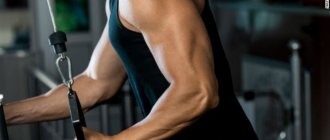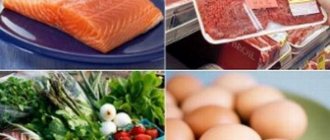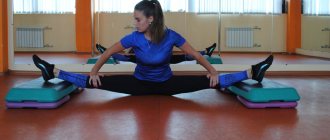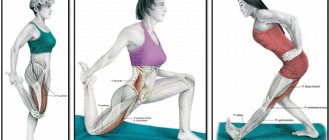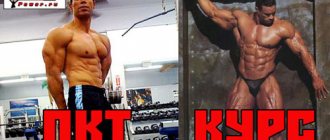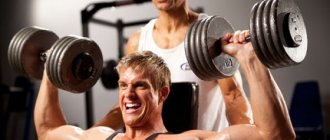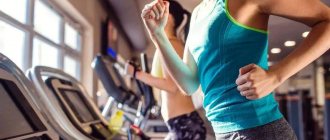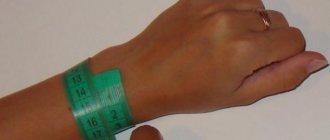What to drink during training[edit | edit code]
The best workout drink is plain water. Of course, the easiest way is to get water directly from the tap. But most people are concerned about the degree of contamination of their tap water, and rightfully so. In many areas, water contains various harmful substances such as lead, pesticides and chlorine by-products in excess of any standard. A good solution in this case is to buy a water purifier that filters out lead and other contaminants. Some filters attach directly to the faucet; others are installed as part of the plumbing system. One of the most convenient and economical methods of water purification is a pour-on filter, which you can put in a special jug and put in the refrigerator. If you use a filter that removes fluoride from your water, check with your dentist because fluoride is essential for dental health.
Another way is to buy bottled water. By and large, this is the best drink for training. There are hundreds of brands, the most popular of which offer spring water and mineral water. Spring water is obtained from underground sources of fresh water that form bodies of water on the surface of the earth. Mineral water comes from reservoirs located under the rocks. It contains the highest concentration of minerals compared to other water sources. Spring water is another type of bottled water that is taken from an aquifer. Spring, mineral and spring water may still contain some contaminants. For this reason, federal services are tightening the quality requirements for bottled water production.
Distilled water, also classified as purified water, is another type of bottled water. It is purified through the process of evaporation followed by condensation. The disadvantage of such water is the lack of minerals in it. In addition, bottled water often lacks fluoride. However, at present, some manufacturing companies add a mineral complex to water, making it more nutritious and palatable.
Some people prefer seltzer water. This is carbonated water, its bubbles are formed by adding compressed carbon dioxide to it. Most of these products are flavored and contain sucrose or fructose. While sparkling water can be enjoyed throughout the day, you'll want to avoid it while you're working out. The gas from the bubbles fills the space in your stomach, giving you a feeling of excessive fullness and, as a result, reducing the total amount of fluid you can drink during and after exercise, and carbon dioxide also stimulates the secretion of stomach acid, which is undesirable during exercise .
No matter what kind of water you drink, be sure to drink 8-12 cups (2-3 liters) or more of fluid daily to stay hydrated, as well as at least 5 such cups (1 liter) of plain water.
When can you start rehabilitation?
Many who have experienced what coronavirus is complain of shortness of breath, fatigue, attacks of dizziness and other similar disorders. Their presence indicates continued changes in the condition and functioning of the lungs. The rehabilitation program is largely aimed at eliminating them.
They begin to work on restoring the body after a coronavirus infection, and especially pneumonia, with the permission of a doctor after the acute inflammatory process has completely stopped and body temperature has normalized. It is important to exclude the presence of disorders of the cardiovascular system and kidneys, since in such situations recovery will be carried out according to a different, special program.
Rehabilitation should begin as early as possible, as this will ensure the best effect, but you should not rush too much, so as not to provoke a deterioration in your well-being. The best option would be to obtain permission from the attending physician, which most patients are granted 20-25 days after the start of treatment.
Expert Opinion of a Doctor
It is important to approach each patient individually and develop a comprehensive program in order to achieve the necessary results as quickly and effectively as possible.
Gritsenko Konstantin Anatolievich
Neurologist, chiropractor, vertebroneurologist
Experience: 29 years
Ask a Question
Designer water[edit | edit code]
We now have more water choices available to us than ever before. Currently, there are fortified water (with minerals and vitamins), fitness water, herbal infused water, oxygenated water, electrolyzed water. The list goes on. Welcome to the world of designer water. And although it may taste great, pay special attention to the clearly unfounded statements on the labels. It happens that ordinary “sweet pop” is called water.
Some types of sweetened water contain almost the same amount of sugar as a can of soda. Carefully read the composition and nutritional content of the drink on the labels.
Enriched water.
Distinguished by its characteristic aroma and sweet taste, this water is enriched with vitamins and minerals dissolved in it. Some types are designed for people who prefer liquid supplements, others are for active people who drink water during exercise and want a little flavor in the water.
Fortified water should not be confused with sports drinks or glucose-electrolyte solutions, which contain higher amounts of carbohydrate energy and electrolytes.
Water for fitness.
This water contains some vitamins and only 10 calories per serving. It is preferred by those who like lightly flavored water and do not need a glucose-electrolyte solution or additional calories.
Herbal infused water.
A relatively recent specialty water that has appeared on the market is herbal-flavored water. Now you can enjoy water containing popular herbs such as echinacea, ginkgo biloba, Siberian ginseng, ginger or St. John's wort. These drinks are a good choice when you want to experience the beneficial effects of these medicinal herbs without swallowing pills. Basically, such water has a light aroma and no sugar, no calories, no gas.
Monitor how much fortified or herbal water you consume in addition to other sources containing the same herbs, vitamins and minerals. You can easily take higher doses. And since the quality assessment of herbal ingredients in foods is not yet well regulated, there is no guarantee that you are consuming exactly the ingredients listed on the label.
Water enriched with oxygen.
It is believed that the oxygen concentration in these drinks is 40 times higher than in ordinary water. Flavored or not, these drinks promise a burst of energy by increasing the oxygenation of your red blood cells. However, to date there have been no published medical reports to support such claims. It turns out that such water has no special value, except that it is another good source of water.
Water subject to electrolysis.
This category refers to water that has been divided into alkali and acid. The alkaline portion is added to the water to keep the pH at approximately 9.5, whereas other types of bottled water have a pH ranging from 6 to 8. The process of electrolysis removes contaminants and most of the total dissolved solids from the water, but leaves behind the electrolytes - calcium, magnesium, potassium, sodium and bicarbonates. Manufacturers of such water guarantee a softer taste, increased digestibility of water, availability of electrolytes and antioxidant properties. Scientific research on this type of water has only just begun, so apart from a mild taste, experts promise you nothing more. Follow the news.
Pre-workout nutrition
To lose weight, you need to eat in this way - consume fewer calories than you burn.
So, for a day there is enough for training:
- men 2.0 – 2.3 thousand cal.;
- women 1.7 – 2.0 thousand cal.
Divide the numbers into several meals on the basis that a solid lunch is 500-600 calories, and a snack is 300. Based on this, create a menu.
On empty stomach
Those who prefer to exercise in the morning are concerned with the question: “Should I eat before sports or should I abstain?”
It’s difficult to answer without understanding it. Active actions are a waste of energy. This means that you need to make sure that it is enough for a full-fledged lesson. The conclusion is: should we eat? At the same time, we must not forget about the goal - to lose weight - is it possible not to eat? We will look for answers to these questions.
First, let's define what hunger means. This is not the case when, fifteen minutes after eating a delicious cookie, you feel an unbearable desire to repeat the pleasure. An organism is considered hungry if it last came into contact with food 8 hours ago. In this case, when under load, there may be very unpredictable sensations.
For example, in the morning, as soon as you wake up, the first thing you do is use the exercise machine, and your head is spinning, your stomach is nauseated, your arms and legs are shaking. This is where you want to maintain your health, not about muscles and a thin waist.
What experts say is that short-term aerobic (no more than 20 minutes) exercise is acceptable on an empty stomach. We went for a run, rode a bike, enough - to the kitchen for a portion of calories.
It is completely contraindicated for beginners to exercise on an empty stomach in order to avoid possible weakness and loss of consciousness due to a sharp drop in blood sugar levels.
Trained people get used to overloads and tolerate them more easily. With increasing sports experience, the body hardens and does not react so violently to active actions in the absence of food, adapting to the economical use of reserves. But this body skill complicates the process of losing weight.
Why is starving worse?
With the beginning of active actions, the body processes fat into energy, taking it from under the skin and muscles. As soon as the load stops (you've finished running), the unused fat is again stored under the skin. It’s not a fact that there will be less of it than before the run.
Protein from the muscles is used as energy fuel, which is absolutely undesirable if your goal is to build muscle mass.
Conclusion: To get more effect from your exercises, it is better to eat, being aware of what you are eating and when.
After a light snack
Some people are used to waking up and immediately throwing something edible into the firebox. Others sway for a long time, not even having the strength to cram a cup of coffee into themselves. And if you have a gym visit ahead, what should you do?
You can’t look at food – a light snack is enough. If you don’t have enough time to prepare a full breakfast, but you definitely need to put something in your stomach, steam oatmeal with a banana. Too difficult? Then just two bananas with a slice of whole grain bread. Advanced snackers snack on dried fruits and a handful of nuts.
The snack is also relevant for lovers of evening activities. Lunch has long been forgotten, dinner is far away, and there are loads ahead, a waste of energy.
A couple of crackers and natural yogurt are the solution to the problem.
A portion of low-fat cottage cheese with a banana or melon will help out.
In case of an emergency, when there are no conditions for food, stock up on energy bars (you can make them yourself from a mixture of dried fruits and nuts). We ate a couple, replenished our calorie reserves, and sports activities will go like clockwork.
Important! Complete a small meal 20-30 minutes before the start of sports activity.
After a full breakfast
The exercise will be beneficial if you take into account two factors when eating:
- Correct ratio of proteins, fats, carbohydrates;
- There is time when there is.
Meals should consist of carbohydrates with added protein.
Choose carbohydrates that have a low glycemic index. They are energy-intensive and maintain blood sugar levels for a long time. Therefore, try to eat a serving of:
- brown rice;
- or vegetable salad;
- oatmeal;
- whole wheat bread;
- nuts.
You will feel light and energetic.
It is necessary to add proteins to the diet to prevent their breakdown in tissues. It could be:
- natural yogurt;
- low-fat cottage cheese;
- a piece of cheese.
Exhausted muscles, having previously received protein, take the necessary amino acids from it and recover faster.
Pay attention to the amount you eat. Having eaten a lot, it is difficult to devote yourself to fitness with enthusiasm. The body is busy digesting the incoming food and does not listen well to the hostess or owner who wants to jump and gallop after a serving of porridge.
Attention! From the end of breakfast to the start of the morning workout, at least one and a half to two hours should pass. From lunch to evening sports – two to three hours.
But even in this case, you should not overload with food. If you want to lose weight, fatty foods and alcohol are prohibited. Portions should be small. Stop before you begin to feel full, then in the gym excess food will not interfere with shaping your figure, reminding you of yourself:
- heaviness in the stomach;
- belching;
- heartburn;
- nausea;
- dizziness;
- weakness.
During the training process, monitor your condition, choosing empirically what is best. Eat a substantial meal two to three hours before or have a snack 30 minutes before the start. With more experience, you will begin to better understand your own body signals.
Try changing portions and meals, taking into account the following important points:
- it is necessary to eat;
- for aerobic exercise, the composition of the meal should include 60% complex carbohydrates and 40% proteins. For strength – protein 60%, carbohydrates 40%;
- The minimum interval between food and exercise is half an hour. Large meals require a longer interval.
Eating right before training to lose weight is the key to excellent endurance during exercise and quick recovery. A thoughtful approach helps to achieve maximum effect from physical activity.
Prepare food in advance so that you eat slowly, don’t worry, or grab pieces of who knows what, which will reduce the effort spent to zero.
Juice is like a sports drink[edit | edit code]
Juices are a source of fluid and good sports drinks. Orange juice, for example, is almost 90% water and rich in vitamins and minerals. While juices help you rehydrate, you'll feel best if you drink at least 5 cups (1 liter) of water each day and use juice to replenish the remaining 8 to 12 cups (2 to 3 liters) of your total fluid needs. .
But there are some cautions to be made regarding juices in your daily diet. In recent years, there has been significant advertising hype surrounding the health benefits of fruit and vegetable juices. Manufacturers of industrial juice machines call fresh juices a panacea for all types of diseases - from stomach ailments to cancer. But is it better to drink five servings of fruit or vegetable juices every day instead of eating whole fruits and vegetables? In no case!
In the production of most juices, the pulp of the fruit is removed. This means that the fiber necessary for the body does not enter the juice, disappearing along with the pulp. Let's say the juice makers are right: some machines retain the pulp in the juice, thus retaining vital fiber and many nutrients. This product is perfect for consuming once a day. But it still won't replace the whole fruit, although as a sports drink, juice meets most requirements.
Freshly squeezed juices are often touted as a better source of nutrients than commercially produced juices. But the latter, frozen and properly stored in the refrigerator, contain slightly less nutrients than freshly squeezed juice. If you don't buy freshly squeezed juice, store it properly at home, and drink it immediately after pressing, your homemade product may be even poorer in nutrients than a quality frozen or refrigerated product.
No matter in what form - cooked, squeezed, dried or raw - fruits and vegetables should form a significant part of your diet. If freshly squeezed juices are your only and favorite source of fruits and vegetables, for God's sake. But do not forget about the disadvantages of such nutrition; do not make juice the only source of vitamins.
If you want to drink juice to replenish your fluids, dilute it at least twice with water. A cup (237 ml) of orange or apple juice plus 2 cups (356 ml) of water will provide you with a 6-8% carbohydrate solution equivalent to a sports drink. But do not resort to this combination during exercise due to the presence of fructose in it. The body uses fructose differently than the combination of sugars found in a typical sports drink. Additionally, some people are sensitive to fructose and may experience intestinal cramps when drinking the juice. As I noted earlier, juice can interfere with fluid absorption if consumed during exercise. It is best to drink a water-fruit mixture an hour or more after finishing classes. Water added to the juice will speed up the loss of fluid from the stomach and, thus, allow you to quickly replenish fluid reserves in the body, and carbohydrates will help restore glycogen reserves.
Time to eat
The ideal diet for training in the fitness room is considered to be eating 1.5–2 hours before the start of the workout. This applies to a full breakfast, lunch or dinner, depending on what time you attend training. If, for various reasons, the time between class and the last meal is much longer, then in an hour you can refresh yourself with a glass of kefir or a small portion of cottage cheese.
If a strong feeling of hunger strikes an athlete immediately before training, then you can muffle it with an apple, orange or a piece of chocolate: do not be afraid of fast carbohydrates, they will instantly provide the necessary energy, which will quickly be used up, and the chocolate simply will not have time to be deposited in “dangerous” places.
Soda[edit | edit code]
Given a choice, most people would choose carbonated drinks over plain water to replenish lost fluids after finishing exercise. And you can't blame them. Carbonated drinks taste good, quench your thirst and generally refresh you.
But for replenishing fluids in the body, carbonated drinks are not the best choice. They contain a huge amount of sugar - the equivalent of about 10 teaspoons (46 g) per jar. Due to their sugar content, carbonated drinks are absorbed more slowly than plain water. Sugar retains fluid in the stomach longer, so the body does not receive enough water. Instead of replenishing your body's fluid reserves, carbonated drinks can actually make you thirstier. Sugar can also trigger a spike in insulin, followed by a rapid drop in blood sugar levels. This reaction of the body can cause a feeling of fatigue and weakness. Additionally, the sugar found in soda comes in the form of high fructose corn syrup, which cannot replenish glycogen stores as quickly as other types of carbohydrates. Fructose can also trigger cramps in people who are sensitive to this substance.
Sugar-free carbonated drinks contain artificial sweeteners, which are potentially harmful to your health. Moreover, all carbonated drinks are naturally carbonated, and carbon dioxide produces gas. And who wants to have a distended belly, especially during exercise?
Diluting a carbonated drink with water is also not an option. Even with reduced concentration, carbonated drinks do not contain anything useful. When it comes to replenishing lost fluids in the body, no drink—including artificially sweetened sodas—can do the job better than the time-tested plain water or a quality glucose-electrolyte solution.
In a study published in BMJ Open, scientists explained that just one serving of most soft drinks sold in the UK contains more than your daily requirement of sugar.[1]
Sweet soda accelerates cell aging[edit | edit code]
Scientists from the University of California have found that lovers of sugary carbonated drinks age faster. Over time, the DNA of those people who drink more than 600 milliliters of soda per day changes so that they look 4.6 years older than their age.
Cindy W. Leung and Barbara A. Laraia of the University of California[2] at San Francisco surveyed 5,309 American adults aged 20 to 65 years as part of the National Nutrition and Health Survey, and collected DNA samples from white blood cells from the respondents. As a result, the researchers found that the more sugary sodas people drink per day, the shorter their telomeres - sections of chromosomes that protect DNA during cell division. The shorter these DNA sections, the older the cell. Soda drinkers who drank 600 milliliters of soda a day had their telomeres shortened so much that their cells looked 4.6 years older. Telomere shortening may be associated not only with aging of the body, but also with the development of various diseases (for example, diabetes or heart and vascular diseases), tissue damage and inflammatory processes.
However, only soda with a high sugar content appears to have such a detrimental effect on telomeres. Scientists currently cannot explain the reasons for this phenomenon, since the processes affecting telomere length when drinking soda have not yet been studied by researchers[3].
Sugary drinks cause the death of 180 thousand people every year[edit | edit code]
Over 180 thousand die due to excessive sugar consumption. 25 thousand of them die because of this in the United States, according to a new study by scientists from Harvard University. In 130 thousand cases, the cause of death was diabetes, 45 thousand were from heart disease and strokes, and 5 thousand were from cancer. Most often, deaths from such causes occur in countries where incomes are low. At the same time, most of the excess sugar consumed comes from sweet drinks, and, first of all, soda.[4]
Changes in the lungs with coronavirus
Infection with a new strain of the SARS-CoV-2 virus causes an acute inflammatory process in the respiratory organs. The virus initially affects the upper respiratory tract, and then can penetrate the lungs and provoke the development of viral pneumonia. It, in turn, can be complicated by the addition of a secondary bacterial infection, which will lead to viral-bacterial pneumonia, which is treated more seriously, takes longer and is less tolerated by the body.
During coronavirus infection, the alveoli, which are the smallest lung structures, are most affected. They are shaped like bubbles and are responsible for gas exchange processes, i.e., the absorption of oxygen by the blood and its purification from carbon dioxide. The coronavirus destroys the walls of the alveoli, which leads to disruption of these processes, as well as the accumulation of inflammatory exudate in the alveoli.
This can lead to the replacement of affected areas with dense connective tissue that is not capable of stretching, which is called pulmonary fibrosis. In such situations, they will not be able to fully perform the respiratory function, and their vital volume will decrease, which, with extensive replacement of normal lung tissue, can even cause disability.
The hypoxia that occurs as a result of impaired gas exchange, i.e. oxygen starvation, negatively affects the functioning of the entire body, since all organs suffer from a lack of oxygen. In such situations, white spots become noticeable on CT or X-ray images, which is also called the ground glass effect. Subsequently, with the development of fibrosis, special darkening may be visualized in the images, indicating pneumofibrosis. Although such changes are characteristic not only of coronavirus infection, but also of other severe bacterial and viral pneumonias.
The development of pulmonary fibrosis leads to shortness of breath, especially after physical exertion, decreased performance up to disability, attacks of dizziness, dry cough, and chest pain. In severe cases, a person may not only lose the ability to work, but also to self-care. It is in order to avoid such undesirable consequences that recovery measures or rehabilitation after pneumonia and coronavirus are required.
